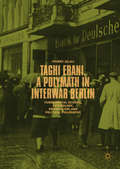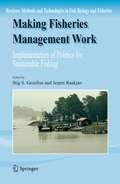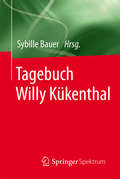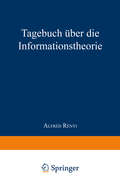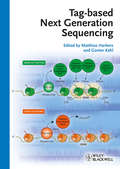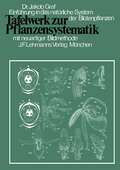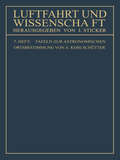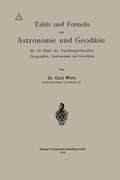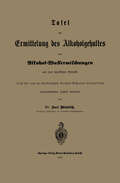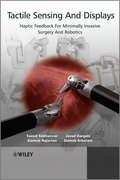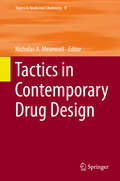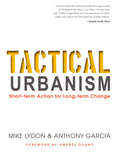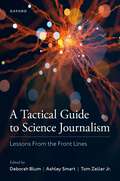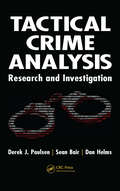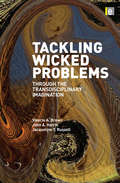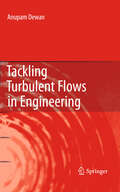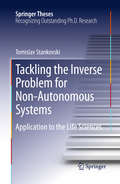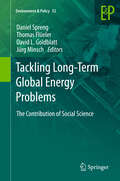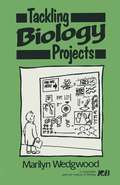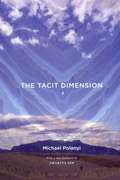- Table View
- List View
Taghi Erani, a Polymath in Interwar Berlin: Fundamental Science, Psychology, Orientalism, and Political Philosophy
by Younes JalaliA prominent civil servant, scientist, and intellectual, Taghi Erani was a pivotal figure in interwar Iran. Witness to two of the major political upheavals in the twentieth century—the rise of Pahlavi and the collapse of the Weimar Republic—he turned from fundamental science to leftwing activism and pacifism, leading to his arrest and death in prison. Younes Jalali traces his journey from Tehran to Berlin, where in the 1920s he crossed paths with the greatest German scientists and scholars of his day, including Max Planck, Albert Einstein, and Friedrich Rosen, and published seminal works on psychology and political philosophy. In the 1930s, as Reza Shah pursued rapprochement with the Third Reich, Taghi Erani was caught up in a crackdown on left-wing and pro-labor activists. His life and death offer a unique lens through which to view modern Iranian intellectual and political history.
Taghi Erani, a Polymath in Interwar Berlin: Fundamental Science, Psychology, Orientalism, and Political Philosophy
by Younes JalaliA prominent civil servant, scientist, and intellectual, Taghi Erani was a pivotal figure in interwar Iran. Witness to two of the major political upheavals in the twentieth century—the rise of Pahlavi and the collapse of the Weimar Republic—he turned from fundamental science to leftwing activism and pacifism, leading to his arrest and death in prison. Younes Jalali traces his journey from Tehran to Berlin, where in the 1920s he crossed paths with the greatest German scientists and scholars of his day, including Max Planck, Albert Einstein, and Friedrich Rosen, and published seminal works on psychology and political philosophy. In the 1930s, as Reza Shah pursued rapprochement with the Third Reich, Taghi Erani was caught up in a crackdown on left-wing and pro-labor activists. His life and death offer a unique lens through which to view modern Iranian intellectual and political history.
Tagging and Tracking of Marine Animals with Electronic Devices (Reviews: Methods and Technologies in Fish Biology and Fisheries #9)
by Jennifer L. Nielsen Haritz Arrizabalaga Nuno Fragoso Alistair Hobday Molly Lutcavage John SibertThe 2nd international tagging and tracking symposium was held in San Sebastian, Spain, in October 2007, seven years after the first symposium was held in Hawaii in 2000 (Sibert and Nielsen 2001). In the intervening seven years, there have been major advances in both the capability and reliability of electronic tags and analytical approaches for geolocation of tagged animals in marine habitats. Advances such as increased data storage capacity, sensor development, and tag miniaturization have allowed researchers to track a much wider array of marine animals, not just large and charismatic species. Importantly, data returned by these tags are now being used in population analyses and movement simulations that can be directly utilized in stock assessments and other management applications. Papers in this volume are divided into three sections, the first describing insights into behavior achieved using acoustic, archival, and novel tags, the second reporting on advances in methods of geolocation, while the final section includes contributions where tag data have been used in management of marine species. Accurate documentation of animal movements and behaviors in critical marine habitats are impossible to obtain with other technologies. The management and conservation of marine species are critical in today’s changing ocean environment and as electronic tags become more accurate and functional for a diversity of organisms their application continues to grow, setting new standards in science and technology.
Tagebuch Willy Kükenthal
by Sybille BauerWilly Kükenthal hat 1886 ein halbes Jahr lang handschriftlich ein wissenschaftliches Tagebuch geführt, und zwar als er sich von einem Walfangsegelschiff nach Spitzbergen hat mitnehmen lassen. Er war der einzige Wissenschaftler an Bord, die Besatzung bestand aus einigen Norwegern und Finnen, insgesamt zehn Mann. In das Tagebuch trug er täglich seine Beobachtungen ein, insbesondere zu Walen, Walrössern, Vögeln und kleinen Meerestieren, aber auch zu Landschaft, Mineralogie und Wetter. Das Tagebuch ist ein Dokument der frühen Walforschung und beschreibt eindrucksvoll die extremen Umstände, unter denen Biologen aus Kükenthals Generation Forschung betrieben.Sybille Bauer, promovierte Geschichtswissenschaftlerin und Skandinavistin aus Berlin, hat das Tagebuch transkribiert, mit einer wissenschaftsgeschichtlichen Einleitung versehen und somit der Öffentlichkeit zugänglich gemacht.
Tag-based Next Generation Sequencing
by Matthias Harbers Guenter KahlTag-based approaches were originally designed to increase the throughput of capillary sequencing, where concatemers of short sequences were first used in expression profiling. New Next Generation Sequencing methods largely extended the use of tag-based approaches as the tag lengths perfectly match with the short read length of highly parallel sequencing reactions. Tag-based approaches will maintain their important role in life and biomedical science, because longer read lengths are often not required to obtain meaningful data for many applications. Whereas genome re-sequencing and de novo sequencing will benefit from ever more powerful sequencing methods, analytical applications can be performed by tag-based approaches, where the focus shifts from 'sequencing power' to better means of data analysis and visualization for common users. Today Next Generation Sequence data require powerful bioinformatics expertise that has to be converted into easy-to-use data analysis tools. The book's intention is to give an overview on recently developed tag-based approaches along with means of their data analysis together with introductions to Next-Generation Sequencing Methods, protocols and user guides to be an entry for scientists to tag-based approaches for Next Generation Sequencing.
Tag-based Next Generation Sequencing (Molecular Plant Biology Ser.)
by Günter Kahl Matthias HarbersTag-based approaches were originally designed to increase the throughput of capillary sequencing, where concatemers of short sequences were first used in expression profiling. New Next Generation Sequencing methods largely extended the use of tag-based approaches as the tag lengths perfectly match with the short read length of highly parallel sequencing reactions. Tag-based approaches will maintain their important role in life and biomedical science, because longer read lengths are often not required to obtain meaningful data for many applications. Whereas genome re-sequencing and de novo sequencing will benefit from ever more powerful sequencing methods, analytical applications can be performed by tag-based approaches, where the focus shifts from 'sequencing power' to better means of data analysis and visualization for common users. Today Next Generation Sequence data require powerful bioinformatics expertise that has to be converted into easy-to-use data analysis tools. The book's intention is to give an overview on recently developed tag-based approaches along with means of their data analysis together with introductions to Next-Generation Sequencing Methods, protocols and user guides to be an entry for scientists to tag-based approaches for Next Generation Sequencing.
Tafelwerk zur Pflanzensystematik: Einführung in das natürliche System der Blütenpflanzen durch neuartige Bildmethode
by J. GrafTafeln zur astronomischen Ortsbestimmung (Luftfahrt und Wissenschaft #7)
by Arnold KohlschütterDieser Buchtitel ist Teil des Digitalisierungsprojekts Springer Book Archives mit Publikationen, die seit den Anfängen des Verlags von 1842 erschienen sind. Der Verlag stellt mit diesem Archiv Quellen für die historische wie auch die disziplingeschichtliche Forschung zur Verfügung, die jeweils im historischen Kontext betrachtet werden müssen. Dieser Titel erschien in der Zeit vor 1945 und wird daher in seiner zeittypischen politisch-ideologischen Ausrichtung vom Verlag nicht beworben.
Tafeln und Formeln aus Astronomie und Geodäsie für die Hand des Forschungsreisenden, Geographen, Astronomen und Geodäten
by Carl Wilhelm WirtzDieser Buchtitel ist Teil des Digitalisierungsprojekts Springer Book Archives mit Publikationen, die seit den Anfängen des Verlags von 1842 erschienen sind. Der Verlag stellt mit diesem Archiv Quellen für die historische wie auch die disziplingeschichtliche Forschung zur Verfügung, die jeweils im historischen Kontext betrachtet werden müssen. Dieser Titel erschien in der Zeit vor 1945 und wird daher in seiner zeittypischen politisch-ideologischen Ausrichtung vom Verlag nicht beworben.
Tafel zur Ermittelung des Alkoholgehaltes von Alkohol-Wassermischungen aus dem spezifischen Gewicht: Nach den von der Kaiserlichen Normal-Aichungs-Kommission
by Karl WindischTactile Sensing and Displays: Haptic Feedback for Minimally Invasive Surgery and Robotics
by Javad Dargahi Saeed Sokhanvar Siamak Najarian Siamak ArbataniComprehensively covers the key technologies for the development of tactile perception in minimally invasive surgery Covering the timely topic of tactile sensing and display in minimally invasive and robotic surgery, this book comprehensively explores new techniques which could dramatically reduce the need for invasive procedures. The tools currently used in minimally invasive surgery (MIS) lack any sort of tactile sensing, significantly reducing the performance of these types of procedures. This book systematically explains the various technologies which the most prominent researchers have proposed to overcome the problem. Furthermore, the authors put forward their own findings, which have been published in recent patents and patent applications. These solutions offer original and creative means of surmounting the current drawbacks of MIS and robotic surgery. Key features:- Comprehensively covers topics of this ground-breaking technology including tactile sensing, force sensing, tactile display, PVDF fundamentals Describes the mechanisms, methods and sensors that measure and display kinaesthetic and tactile data between a surgical tool and tissue Written by authors at the cutting-edge of research into the area of tactile perception in minimally invasive surgery Provides key topic for academic researchers, graduate students as well as professionals working in the area
Tactile Sensing and Displays: Haptic Feedback for Minimally Invasive Surgery and Robotics
by Javad Dargahi Saeed Sokhanvar Siamak Najarian Siamak ArbataniComprehensively covers the key technologies for the development of tactile perception in minimally invasive surgery Covering the timely topic of tactile sensing and display in minimally invasive and robotic surgery, this book comprehensively explores new techniques which could dramatically reduce the need for invasive procedures. The tools currently used in minimally invasive surgery (MIS) lack any sort of tactile sensing, significantly reducing the performance of these types of procedures. This book systematically explains the various technologies which the most prominent researchers have proposed to overcome the problem. Furthermore, the authors put forward their own findings, which have been published in recent patents and patent applications. These solutions offer original and creative means of surmounting the current drawbacks of MIS and robotic surgery. Key features:- Comprehensively covers topics of this ground-breaking technology including tactile sensing, force sensing, tactile display, PVDF fundamentals Describes the mechanisms, methods and sensors that measure and display kinaesthetic and tactile data between a surgical tool and tissue Written by authors at the cutting-edge of research into the area of tactile perception in minimally invasive surgery Provides key topic for academic researchers, graduate students as well as professionals working in the area
Tactics in Contemporary Drug Design (Topics in Medicinal Chemistry #12)
by Nicholas A. MeanwellMedicinal chemistry is both science and art. The science of medicinal chemistry offers mankind one of its best hopes for improving the quality of life. The art of medicinal chemistry continues to challenge its practitioners with the need for both intuition and experience to discover new drugs. Hence sharing the experience of drug research is uniquely beneficial to the field of medicinal chemistry. Drug research requires interdisciplinary team-work at the interface between chemistry, biology and medicine. Therefore, the topic-related series Topics in Medicinal Chemistry covers all relevant aspects of drug research, e.g. pathobiochemistry of diseases, identification and validation of (emerging) drug targets, structural biology, drugability of targets, drug design approaches, chemogenomics, synthetic chemistry including combinatorial methods, bioorganic chemistry, natural compounds, high-throughput screening, pharmacological in vitro and in vivo investigations, drug-receptor interactions on the molecular level, structure-activity relationships, drug absorption, distribution, metabolism, elimination, toxicology and pharmacogenomics. In general, special volumes are edited by well known guest editors.
Tactical Urbanism: Short-term Action For Long-term Change
by Mike Lydon Anthony GarciaShort-term, community-based projects—from pop-up parks to open streets initiatives—have become a powerful and adaptable new tool of urban activists, planners, and policy-makers seeking to drive lasting improvements in their cities and beyond. These quick, often low-cost, and creative projects are the essence of the Tactical Urbanism movement. Whether creating vibrant plazas seemingly overnight or re-imagining parking spaces as neighborhood gathering places, they offer a way to gain public and government support for investing in permanent projects, inspiring residents and civic leaders to experience and shape urban spaces in a new way.Tactical Urbanism, written by Mike Lydon and Anthony Garcia, two founders of the movement, promises to be the foundational guide for urban transformation. The authors begin with an in-depth history of the Tactical Urbanism movement and its place among other social, political, and urban planning trends, and a detailed set of case studies demonstrate the breadth and scalability of tactical urbanism interventions. Finally, the book provides a detailed toolkit for conceiving, planning, and carrying out projects, including how to adapt them based on local needs and challenges.Tactical Urbanism will inspire and empower a new generation of engaged citizens, urban designers, land use planners, architects, and policymakers to become key actors in the transformation of their communities.
A Tactical Guide to Science Journalism: Lessons From the Front Lines
by Ashley Smart And Tom Zeller Deborah Blum Jr.A Tactical Guide to Science Journalism brings together award-winning journalists from around the world to share fascinating tales of science and how it works and to provide guidance into reporting specialties like infectious disease, climate change, astronomy, public health, physics, and statistics. From practical advice on finding sources and distilling complex research subjects for a general audience, to tips on how to cover science in authoritarian regimes, the book serves as an essential survey of the best in science reporting today--and a testament to the importance of independent journalistic inquiry in understanding research and building trust with audiences. Drawing insights from writers based at publications including The New York Times, the BBC, The Washington Post, Science, The New Yorker, National Geographic and more, this guide is designed to help journalists everywhere improve their craft and serve as a valuable resource for those seeking to understand the profession at its best.
A Tactical Guide to Science Journalism: Lessons From the Front Lines
A Tactical Guide to Science Journalism brings together award-winning journalists from around the world to share fascinating tales of science and how it works and to provide guidance into reporting specialties like infectious disease, climate change, astronomy, public health, physics, and statistics. From practical advice on finding sources and distilling complex research subjects for a general audience, to tips on how to cover science in authoritarian regimes, the book serves as an essential survey of the best in science reporting today--and a testament to the importance of independent journalistic inquiry in understanding research and building trust with audiences. Drawing insights from writers based at publications including The New York Times, the BBC, The Washington Post, Science, The New Yorker, National Geographic and more, this guide is designed to help journalists everywhere improve their craft and serve as a valuable resource for those seeking to understand the profession at its best.
Tactical Crime Analysis: Research and Investigation
by Derek J. PaulsenResearch has shown that the majority of crimes are committed by persistent or serial offenders, with as little as seven percent of offenders accounting for approximately 60 percent of all crimes. By focusing police efforts on these prolific offenders and learning to identify, analyze, and resolve the crimes they commit, the law enforcement communit
Tackling Wicked Problems: Through the Transdisciplinary Imagination
by John Harris Valerie A Brown Jacqueline RussellFrom climate change to GM foods, we are increasingly confronted with complex, interconnected social and environmental problems that span disciplines, knowledge bases and value systems. This book offers a transdisciplinary, open approach for those working towards resolving these 'wicked' problems and highlights the crucial role of this 'transdisciplinary imagination' in addressing the shift to sustainable futures. Tackling Wicked Problems provides readers with a framework and practical examples that will guide the design and conduct of their own open-ended enquiries. In this approach, academic disciplines are combined with personal, local and strategic understanding and researchers are required to recognise multiple knowledge cultures, accept the inevitability of uncertainty, and clarify their own and others' ethical positions. The authors then comment on fifteen practical examples of how researchers have engaged with the opportunities and challenges of conducting transdisciplinary inquiries. The book gives those who are grappling with complex problems innovative methods of inquiry that will allow them to work collaboratively towards long-term solutions.
Tackling Wicked Problems: Through the Transdisciplinary Imagination
by John Harris Valerie A Brown Jacqueline RussellFrom climate change to GM foods, we are increasingly confronted with complex, interconnected social and environmental problems that span disciplines, knowledge bases and value systems. This book offers a transdisciplinary, open approach for those working towards resolving these 'wicked' problems and highlights the crucial role of this 'transdisciplinary imagination' in addressing the shift to sustainable futures. Tackling Wicked Problems provides readers with a framework and practical examples that will guide the design and conduct of their own open-ended enquiries. In this approach, academic disciplines are combined with personal, local and strategic understanding and researchers are required to recognise multiple knowledge cultures, accept the inevitability of uncertainty, and clarify their own and others' ethical positions. The authors then comment on fifteen practical examples of how researchers have engaged with the opportunities and challenges of conducting transdisciplinary inquiries. The book gives those who are grappling with complex problems innovative methods of inquiry that will allow them to work collaboratively towards long-term solutions.
Tackling Turbulent Flows in Engineering
by Anupam DewanThe emphasis of this book is on engineering aspects of fluid turbulence. The book explains for example how to tackle turbulence in industrial applications. It is useful to several disciplines, such as, mechanical, civil, chemical, aerospace engineers and also to professors, researchers, beginners, under graduates and post graduates. The following issues are emphasized in the book: - Modeling and computations of engineering flows: The author discusses in detail the quantities of interest for engineering turbulent flows and how to select an appropriate turbulence model; Also, a treatment of the selection of appropriate boundary conditions for the CFD simulations is given. - Modeling of turbulent convective heat transfer: This is encountered in several practical situations. It basically needs discussion on issues of treatment of walls and turbulent heat fluxes. - Modeling of buoyancy driven flows, for example, smoke issuing from chimney, pollutant discharge into water bodies, etc
Tackling the Inverse Problem for Non-Autonomous Systems: Application to the Life Sciences (Springer Theses)
by Tomislav StankovskiThis thesis presents a new method for following evolving interactions between coupled oscillatory systems of the kind that abound in nature. Examples range from the subcellular level, to ecosystems, through climate dynamics, to the movements of planets and stars. Such systems mutually interact, adjusting their internal clocks, and may correspondingly move between synchronized and non-synchronized states. The thesis describes a way of using Bayesian inference to exploit the presence of random fluctuations, thus analyzing these processes in unprecedented detail. It first develops the basic theory of interacting oscillators whose frequencies are non-constant, and then applies it to the human heart and lungs as an example. Their coupling function can be used to follow with great precision the transitions into and out of synchronization. The method described has the potential to illuminate the ageing process as well as to improve diagnostics in cardiology, anesthesiology and neuroscience, and yields insights into a wide diversity of natural processes.
Tackling Long-Term Global Energy Problems: The Contribution of Social Science (Environment & Policy #52)
by Daniel Spreng, Thomas Flüeler, David L. Goldblatt and Jürg MinschThis book makes a case for a multidisciplinary and transdisciplinary approach to energy research—one that brings more of the social sciences to bear. Featuring eight studies from across the spectrum of the social sciences, each applying multiple disciplines to one or more energy-related problems, the book demonstrates the strong analytical and policy-making potential of such a broadened perspective. Case studies include: energy transitions of households in developing countries, the ‘curse of oil’, politics and visions for renewables, economics and ethics in emissions trading, and carbon capture and storage.
The Tacit Dimension
by Michael Polanyi“I shall reconsider human knowledge by starting from the fact that we can know more than we can tell,” writes Michael Polanyi, whose work paved the way for the likes of Thomas Kuhn and Karl Popper. The Tacit Dimension argues that tacit knowledge—tradition, inherited practices, implied values, and prejudgments—is a crucial part of scientific knowledge. Back in print for a new generation of students and scholars, this volume challenges the assumption that skepticism, rather than established belief, lies at the heart of scientific discovery. “Polanyi’s work deserves serious attention. . . . [This is a] compact presentation of some of the essentials of his thought.”—Review of Metaphysics “Polanyi’s work is still relevant today and a closer examination of this theory that all knowledge has personal and tacit elements . . . can be used to support and refute a variety of widely held approaches to knowledge management.”—Electronic Journal of Knowledge "The reissuing of this remarkable book give us a new opportunity to see how far-reaching—and foundational—Michael Polanyi's ideas are, on some of the age-old questions in philosophy."—Amartya Sen, from the new Foreword
